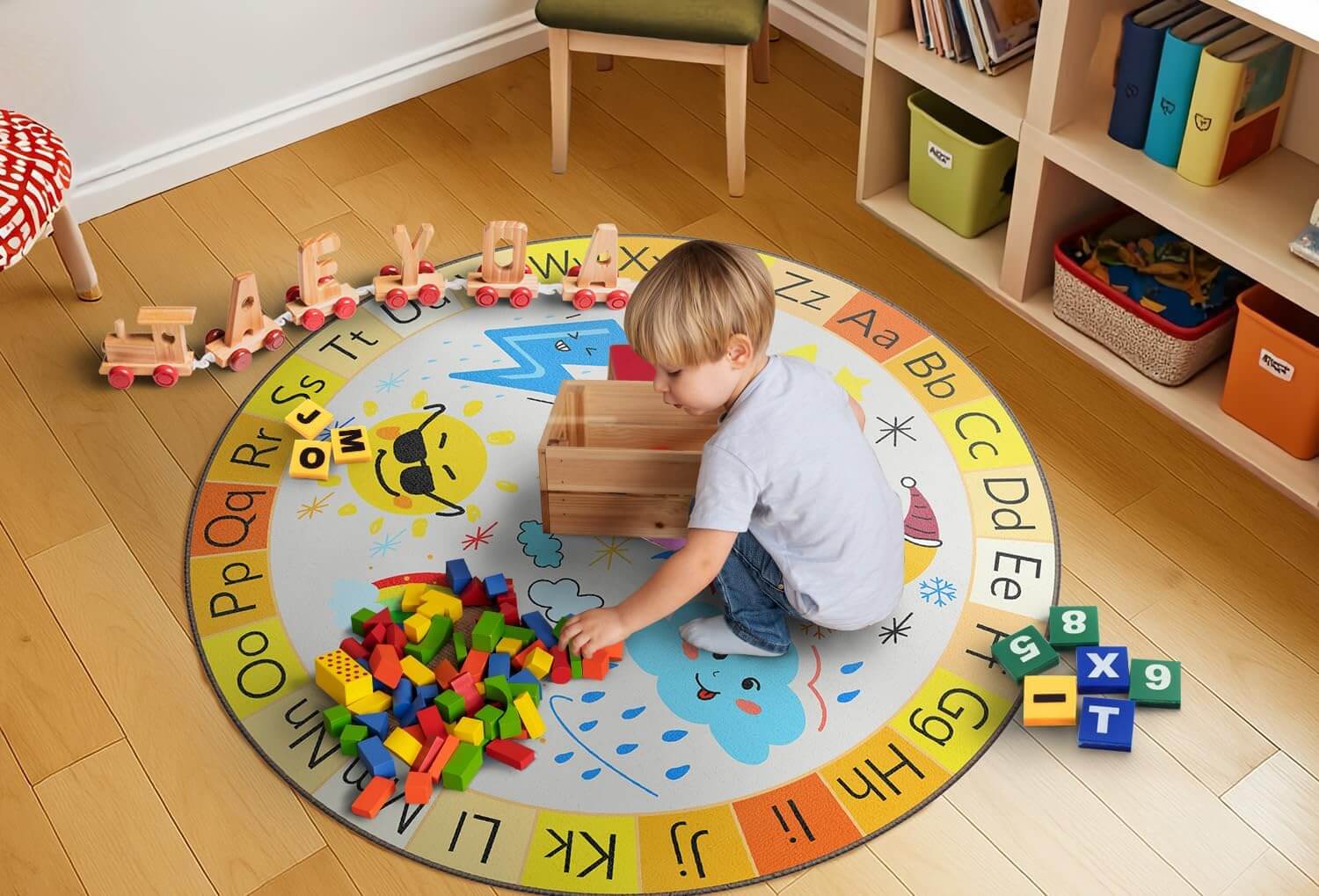Y'all ever walked into a room that just made you feel happy? That's not just a coincidence – that's your brain throwing a little chemical party! The latest buzz in classroom design has teachers swapping out those sad, beige floors for vibrant classroom carpets that do more than just look pretty – they're actually giving those growing brains a motivation makeover!
What in Tarnation is "Dopamine Décor"?
If you've been scrolling through TikTok or Instagram lately, you've probably spotted the term "dopamine dressing" – the idea of wearing bright, happy colors to boost your mood. Well, the concept has jumped from our closets to our classrooms in the form of "dopamine décor"!
According to Psychology Today, our surroundings directly influence our brain chemistry. Dopamine – that feel-good neurotransmitter responsible for motivation and reward – gets a serious boost from certain visual stimuli, especially vibrant colors and engaging patterns.
As one Mississippi kindergarten teacher put it, "When we replaced our old gray carpet with a rainbow pattern, it was like somebody flipped a switch! My sleepy morning class transformed into eager beavers ready to learn. They literally cheer when they walk in the door now!"
The Science Behind the Motivation Magic
This ain't just teachers' wishful thinking, y'all – it's backed by some serious brain science! According to Wikipedia's entry on color psychology, specific colors and patterns can trigger physiological responses that influence mood, attention, and even learning outcomes.
Here's how those carpet colors might be working on young brains:
Red: The Attention Grabber
- Increases alertness and energy
- Stimulates excitement and motivation
- Works wonderfully for morning meeting areas
- Best used in moderation (too much can overwhelm)
Yellow: The Happiness Trigger
- Directly stimulates dopamine production
- Creates feelings of optimism and positivity
- Enhances memory and recall
- Perfect for brainstorming zones
Blue: The Focus Enhancer
- Promotes calm concentration
- Reduces anxiety while maintaining alertness
- Supports working memory
- Ideal for independent work spaces
Green: The Balance Creator
- Combines alertness with calmness
- Reduces stress while maintaining focus
- Creates feelings of growth and possibility
- Works well for collaborative areas
One Louisiana third-grade teacher shared, "Our new carpet has different colored zones – blue for our reading corner, yellow for our morning meeting space, and green for our collaboration station. The kiddos naturally gravitate to the area that matches the energy they need for that activity!"
Pattern Power for the Learning Brain
It's not just about color, friends! According to the American Academy of Pediatrics blog, specific patterns can enhance cognitive development and learning engagement:
Reward-Triggering Patterns Include:
- Concentric circles: Create focal points that draw attention
- Curved paths: Simulate journey-taking, triggering anticipation
- Geometric progressions: Provide visual satisfaction through pattern recognition
- Natural textures: Connect to innate biophilia for comfort and curiosity
A Georgia pre-K teacher explained, "Our carpet has this gorgeous spiral pattern that naturally draws the kiddos to the center for story time. It's like a visual cue that says 'something exciting happens here' – no nagging required!"
Creating a Full-Brain Classroom Experience
The savviest educators are using motivational carpet patterns as part of a complete sensory approach to dopamine-boosting classroom design:
- Visual stimulation: Vibrant carpets and strategic color throughout the room
- Tactile exploration: Different carpet textures for sensory engagement
- Movement opportunities: Floor patterns that encourage beneficial movement
- Acoustic consideration: Carpets that absorb sound for a calmer environment
As one Texas first-grade teacher shared, "Our rainbow wave carpet isn't just pretty – it's an active part of our learning! We use the different colored waves for group assignments, movement breaks, and even as a visual timer for transitions. The kids are more engaged because their environment is actually part of the lesson."
Finding the Dopamine Sweet Spot
Now, before y'all run out and buy the brightest, busiest carpet you can find – let's talk balance! According to Edutopia, there's a "just right" level of stimulation:
- Too little stimulation = boredom and disengagement
- Too much stimulation = distraction and anxiety
- Just right = curiosity, motivation, and learning flow
A veteran Arkansas kindergarten teacher advised, "I made the mistake of getting a carpet with every color and pattern imaginable. It was sensory overload! We've since found that 2-3 main colors with a single cohesive pattern works best for maintaining attention without overstimulation."
Dopamine-Boosting Carpet Features
When shopping for your classroom, look for these motivation-enhancing elements:
- Moderate complexity: Enough visual interest to engage without overwhelming
- Strategic color use: Purposeful placement of stimulating and calming hues
- Functional patterns: Designs that serve learning purposes beyond decoration
- Defined zones: Clear areas for different types of activities and energy levels
Our friends at Boooom Jackson offer a range of classroom carpets designed with both visual appeal and brain science in mind.
Budget-Friendly Dopamine Design
Not in the budget for a whole new carpet? Try these hacks:
- Add colorful carpet squares as focal points
- Use removable colored tape to create patterns on existing carpets
- Incorporate bright pillows or cushions to existing floor spaces
- Try color-changing LED lights to transform a neutral carpet
One creative North Carolina teacher shared, "We couldn't afford to replace our plain beige carpet, so we created a 'dopamine path' with colorful carpet samples arranged in a pattern. The kids follow it during transitions, and it's become their favorite part of the day!"
The Joy Effect
There's something downright magical about watching children respond to an environment designed to make them feel good. As one Michigan educator put it, "Since creating our 'dopamine décor' classroom, I've noticed that not only are the kiddos more engaged, but they're also kinder to each other. It's like the happy environment is bringing out their best selves!"
When we create spaces that trigger those feel-good brain chemicals, we're not just making learning more efficient – we're associating education with positive feelings that can last a lifetime.
What dopamine-boosting design elements have y'all tried in your classrooms? We'd love to hear your experiences in the comments!




Leave a comment
This site is protected by hCaptcha and the hCaptcha Privacy Policy and Terms of Service apply.